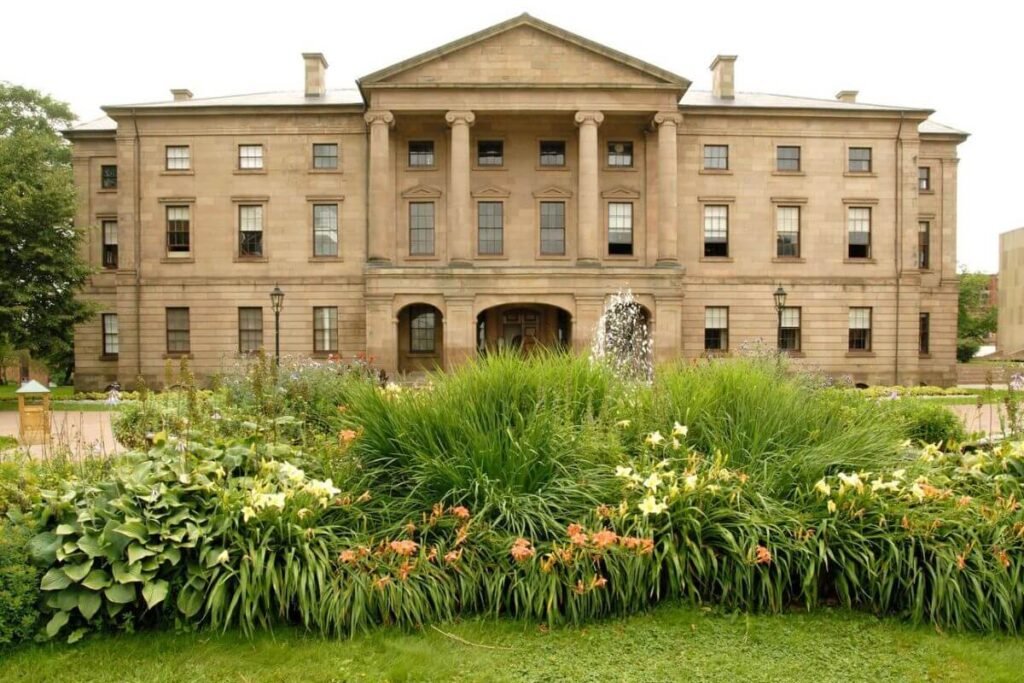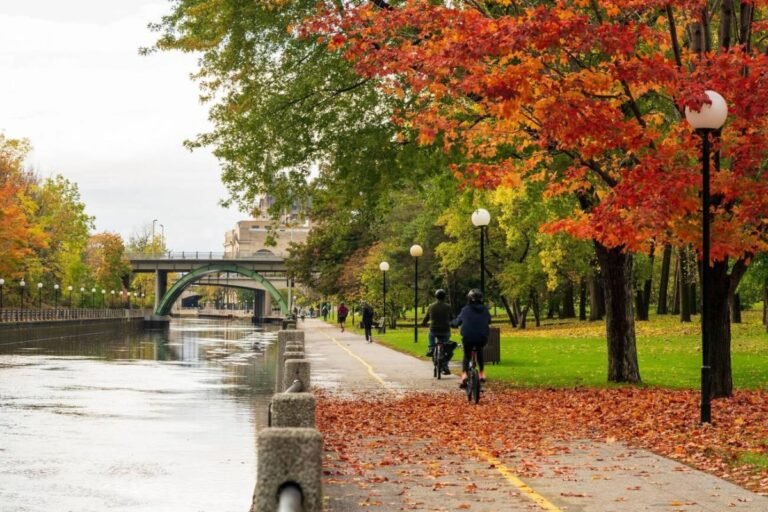Introduction to Charlottetown’s Historical Sites
Charlottetown, the capital of Prince Edward Island, is a city steeped in history and brimming with charm. Known as the “Birthplace of Confederation,” Charlottetown offers a wealth of historical sites that provide a fascinating glimpse into Canada’s past. From grand Victorian homes to significant political landmarks, each site tells a unique story about the city’s rich heritage. This guide will take you on a journey through Charlottetown’s most notable historical sites, ensuring a deeper understanding and appreciation of this enchanting city’s history.
1. Province House National Historic Site
The Birthplace of Confederation
Province House is a cornerstone of Canadian history, as it is the site where the Charlottetown Conference was held in 1864, leading to the creation of the Canadian Confederation. This National Historic Site is not only a symbol of political unity but also an architectural gem.
Visitor Experience
Visitors to Province House can explore the meticulously preserved rooms where the Fathers of Confederation met. Guided tours offer insightful narratives about the discussions that took place and the decisions that shaped Canada. Interactive exhibits provide a deeper understanding of the historical significance of the site.
2. St. Dunstan’s Basilica
Architectural Significance
St. Dunstan’s Basilica is one of Charlottetown’s most iconic landmarks. This stunning example of Gothic Revival architecture features intricate stained glass windows, lofty arches, and detailed stonework. The basilica is a testament to the city’s architectural heritage and religious history.
Religious and Cultural Importance
As the cathedral church of the Roman Catholic Diocese of Charlottetown, St. Dunstan’s Basilica holds significant religious importance. Visitors can attend services, explore the beautiful interior, and learn about the basilica’s history and its role in the community.
3. Beaconsfield Historic House
Victorian Elegance
Beaconsfield Historic House is a beautifully preserved Victorian-era home that offers a glimpse into Charlottetown’s affluent past. Built in 1877, the house is renowned for its elegant architecture, lavish interiors, and historical significance.
Guided Tours
Guided tours of Beaconsfield Historic House provide an intimate look at the life of the city’s elite in the late 19th century. Visitors can explore the richly furnished rooms, learn about the house’s history, and discover stories about its former inhabitants.

4. Government House
Official Residence
Government House, the official residence of the Lieutenant Governor of Prince Edward Island, is a grand example of Georgian architecture. Built in the early 19th century, it has been the site of many important events and continues to play a central role in the province’s ceremonial life.
Historical Significance
Visitors to Government House can tour the elegant rooms, which are filled with period furnishings and historical artifacts. The house and its beautifully landscaped grounds provide a picturesque setting and a fascinating glimpse into the province’s colonial history.
5. Ardgowan National Historic Site
Home of a Father of Confederation
Ardgowan was the home of William Henry Pope, one of the Fathers of Confederation. This beautifully restored 19th-century estate offers insights into the life of one of Canada’s founding figures and the early days of Confederation.
Gardens and Grounds
The estate’s gardens and grounds are meticulously maintained, offering a peaceful retreat in the heart of Charlottetown. Visitors can tour the house, stroll through the gardens, and learn about Pope’s contributions to Canadian history.
6. All Souls’ Chapel
Gothic Revival Architecture
All Souls’ Chapel, located next to St. Peter’s Cathedral, is a beautiful example of Gothic Revival architecture. Built in 1888, the chapel features intricate woodwork, stunning stained glass windows, and an interior adorned with religious artwork.
Artistic Interior
The chapel’s interior is a masterpiece of Victorian ecclesiastical art, with paintings by Robert Harris, a renowned Canadian artist. Visitors can admire the chapel’s artistic beauty and learn about its history and significance to the local community.
7. Founders’ Hall
Interactive Confederation Exhibit
Founders’ Hall is an interactive museum that tells the story of Canadian Confederation. Through engaging exhibits and multimedia presentations, visitors can learn about the Charlottetown Conference and the events that led to the formation of Canada.
Multimedia Presentations
The museum’s exhibits provide a comprehensive overview of the Confederation process, from the initial discussions to the final agreements. Founders’ Hall offers an educational and immersive experience that is both informative and entertaining.
8. Prince Edward Battery
Coastal Defense History
Prince Edward Battery is a historic fortification located in Victoria Park. Built in the 19th century, the battery was part of Charlottetown’s coastal defense system. Today, it stands as a reminder of the city’s military history.
Scenic Views and Trails
The area around the battery offers scenic walking trails and panoramic views of Charlottetown Harbour. Visitors can explore the historic site, enjoy a picnic, or simply take in the stunning scenery.
9. Victoria Park
Historical Monuments
Victoria Park is not only a beautiful green space but also home to several historical monuments. These include the Boer War Monument and the statue of Sir John A. Macdonald, Canada’s first Prime Minister. The park offers a mix of natural beauty and historical significance.
Recreational Space
In addition to its historical monuments, Victoria Park features walking trails, tennis courts, a swimming pool, and playgrounds, making it a perfect spot for relaxation and recreation. The park hosts various community events throughout the year, adding to its vibrant atmosphere.
10. Peake’s Quay
Historic Waterfront Area
Peake’s Quay is a historic waterfront area in Charlottetown that offers a lively atmosphere and beautiful views of the harbor. The wharf is a hub of activity, with shops, restaurants, and entertainment options.
Shops and Restaurants
Visitors can enjoy fresh seafood at one of the waterfront restaurants, browse unique local shops, and watch boats come and go in the harbor. Peake’s Quay is also a popular spot for live music and other entertainment, especially during the summer months.
FAQs about Charlottetown Historical Sites
What are the must-see historical sites in Charlottetown?
Must-see historical sites in Charlottetown include Province House National Historic Site, St. Dunstan’s Basilica, Beaconsfield Historic House, Government House, and Ardgowan National Historic Site. Each offers a unique glimpse into the city’s rich history.
Can you visit the homes of historical figures in Charlottetown?
Yes, you can visit the homes of historical figures such as William Henry Pope at Ardgowan National Historic Site and the elite residents of Beaconsfield Historic House. Both sites offer guided tours and provide insights into the lives of their former inhabitants.
What architectural styles are represented in Charlottetown’s historical buildings?
Charlottetown’s historical buildings feature a variety of architectural styles, including Gothic Revival (St. Dunstan’s Basilica and All Souls’ Chapel), Georgian (Government House), and Victorian (Beaconsfield Historic House). Each style reflects different periods in the city’s history.
Are there any interactive museums in Charlottetown?
Yes, Founders’ Hall is an interactive museum that tells the story of Canadian Confederation through engaging exhibits and multimedia presentations. It offers an educational and immersive experience for visitors of all ages.
What outdoor historical sites can I visit in Charlottetown?
Outdoor historical sites in Charlottetown include Prince Edward Battery and Victoria Park, which feature historical monuments and scenic walking trails. Peake’s Quay is another outdoor area with historical significance and vibrant waterfront activities.
What is the best time to visit Charlottetown’s historical sites?
The best time to visit Charlottetown’s historical sites is during the summer months (June to September) when the weather is warm, and many outdoor activities and events take place. Fall (October to November) is also a great time to visit for beautiful foliage and a quieter atmosphere.
Inbound and Outbound Links
Inbound Links:
- Charlottetown Tourism Board: For additional information and travel resources, visit the Charlottetown Tourism Board.
- Prince Edward Island Heritage: Explore more about the island’s heritage at the Prince Edward Island Heritage.
Outbound Links:
- Province House National Historic Site: For visiting hours and tour information, visit the Province House National Historic Site.
- Beaconsfield Historic House: Learn more about guided tours and events at Beaconsfield Historic House.
Charlottetown’s historical sites offer a rich tapestry of stories and experiences that bring the past to life. From the grand halls of Province House to the charming streets of Victoria Row, each site provides a unique perspective on the city’s heritage. Whether you’re a history enthusiast or a casual visitor, Charlottetown’s historical sites promise a journey filled with discovery and wonder.



